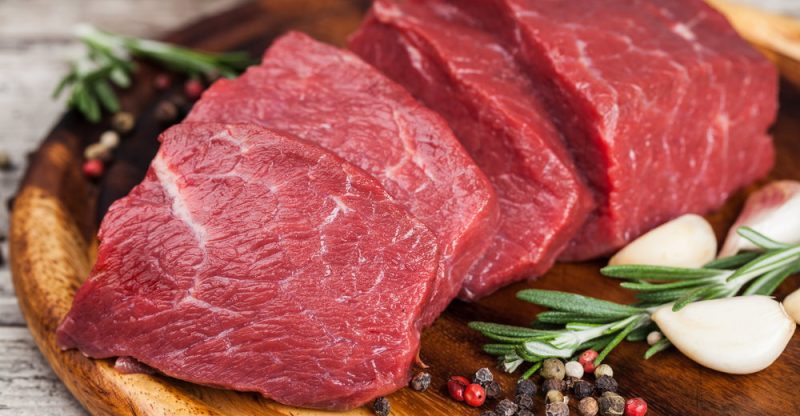Top 15 Foods High in Zinc
Zinc is a mineral that has many health benefits. Foods high in zinc are often used as dietary supplements and can help support immune function, cognitive development, bone health, and healing wounds.
Zinc is a vital trace mineral that is involved in over a hundred enzymatic activities in the body, which is why eating zinc-rich foods is so important.
This mineral is required in modest quantities daily to sustain health and conduct essential tasks. Zinc advantages originate from its presence in every body cell; it’s required for proper cell division and functions as an antioxidant, preventing free radical damage and delaying the aging process.
Zinc insufficiency is increasingly recognized as a serious nutritional issue globally, with one of the primary reasons being a lack of zinc-rich diets. As a result, millions of individuals throughout the globe, according to the World Health Organization, may be deficient in zinc in their diets. Zinc deficiency is the sixth most common cause of sickness in the globe. It happens when you don’t eat enough zinc-rich foods or have problems absorbing zinc from meals due to digestive issues or poor gut health.
The good news is that by eating enough zinc-rich foods, such as those mentioned in the top 10 sources below, individuals may avoid low zinc levels and receive the advantages of this crucial mineral.
Top 15 Zinc-Rich Foods
Because zinc bioavailability (the proportion of zinc kept and utilized by the body) is high in meals like animal meat and seafood, animal foods are the greatest sources of zinc compared to plant foods like vegetables.
This is owing to the lack of chemicals in animal diets that impede zinc absorption and the availability of sulfur-containing amino acids like cysteine and methionine, which increase zinc absorption.
Although plant-based zinc meals exist, they are less bioavailable due to phytic acid (or phytates) concentration, hindering zinc absorption. According to reports, persons who don’t consume meat or animal products, such as vegetarians or vegans, need up to 50% more zinc in their diets to absorb what the body requires.
However, procedures like soaking, boiling, sprouting, fermenting, and leavening may reduce the inhibitory effects of phytic acid on zinc absorption. According to research, zinc absorption may also be boosted by eating yeast-based and sourdough bread, sprouts, and presoaked legumes.
Consuming two to three servings of these zinc meals each day is the best method to attain adequate zinc levels:
1. Lamb
6.7 milligrams per 3 ounces (45 percent DV)
Lamb is rich in numerous vitamins and minerals. Lamb also includes vitamin B12, riboflavin, selenium, niacin, phosphorus, iron, and zinc.
2. Pumpkin Seeds
6.6 milligrams per cup (44 percent DV)
Pumpkin seeds and pumpkin seed oil have been proved to be an important diet for postmenopausal women’s health. In addition, pumpkin seeds are also beneficial to prostate health and mental well-being.
3. Hemp Seeds
5 milligrams per ounce (34 percent DV)
Hemp seeds are high in zinc, but they’re also high in omega-3 and omega-6 fatty acids, which are good for your heart and help to keep inflammation at bay.
4. Beef from Grass-Fed Cows
4.5 milligrams per 100 grams (30 percent DV)
Omega-3 fatty acids and conjugated linoleic acid, a strong polyunsaturated fatty acid proven to help lower the risk of heart disease, improve blood sugar, inhibit weight gain, and build muscle, are included in grass-fed beef nutrition.
5. Chickpeas
2.5 milligrams per cup (17 percent DV)
Chickpeas, like other legumes, are a kind of complex carbohydrate that the body can digest and utilize for energy over time. Chickpeas have been shown in studies to induce satiety and aid weight reduction. They also aid digestion by pushing food through the digestive system more rapidly.
6. Lentils
2.5 milligrams per cup (17 percent DV)
Lentils are high in polyphenols and micronutrients, particularly zinc, and are recognized for their health-promoting properties. In addition, lentils are a good source of zinc for vegetarians since they are a plant-based protein.
7. Powdered cocoa
1.9 milligrams per ounce (13 percent DV)
Epicatechin and catechin, two flavonoids found in cocoa powder, are antioxidants that aid in reducing inflammation and illness. In addition, cocoa powder contains flavonoids, which assist enhance blood flow while also lowering blood pressure.
8. Cashews
1.6 milligrams per ounce (11 percent DV)
Cashews are strong in protein and high in unsaturated fatty acids. Cashew nutrition aids in the prevention of heart disease, the reduction of inflammation, the promotion of bone health, and the maintenance of good brain function. Because they make you feel fuller and reduce food cravings, these nuts aid in weight reduction or maintenance. Cashews also contain excellent zinc to copper ratio, which helps to keep both minerals in balance.
9. Yogurt or Kefir
1.4 milligrams (10 percent DV) per cup (values vary)
Kefir and yogurt are probiotic foods made from cultured dairy products. Kefir and probiotic yogurt both help with digestion, immune system support, cardiovascular health, and mood regulation.
10. Ricotta cheese
1.4 milligrams per 12 cups (10 percent DV)
Ricotta cheese is one of the healthiest cheeses available since it is high in omega-3 fatty acids and minerals like zinc. Ricotta is also lower in salt and saturated fat than many other kinds of cheese, and it is termed a “fresh cheese” since it is not matured.
11. Mushrooms
1.4 milligrams per cup (9 percent DV)
Mushroom nutrition advantages include the capacity to promote immunity and decrease inflammation owing to antioxidant activity.
12. Spinach
1.4 milligrams per cup (9 percent DV)
Spinach is one of the world’s most nutrient-dense foods. It includes unique protective carotenoids that have been associated with a lower risk of a variety of ailments, including heart disease, obesity, diabetes, neurodegenerative disorders, and more.
13. Avocado
1.3 milligrams per avocado (8 percent DV)
Reach for avocado if you’re seeking zinc-rich foods. It’s regarded as one of the world’s healthiest foods due to its high content of key nutrients. In studies, avocado-eating has also been linked to improved diet quality and nutrient intake.
14. Chicken
1 milligram per 100 grams (7 percent DV)
Chicken is an excellent source of B vitamins, including vitamin B12, niacin, vitamin B6, pantothenic acid, and zinc. Chicken contains vitamin B12, which helps to maintain energy levels, improve mood, protect the heart, and improve skin health.
15. Almonds
0.9 milligrams per ounce (6 percent DV)
Do you want to know which nuts are rich in zinc? Almond nutrition is absolutely astounding, and several studies have shown that it aids a variety of health conditions, including cardiovascular health and weight management. Almonds contain zinc and vitamin E, manganese, magnesium, and riboflavin, among other essential minerals.
Health Advantages
Regularly consuming zinc-rich foods will benefit your health in the following ways:
- Zinc is a potent antioxidant that aids in preventing oxidative stress and the development of a variety of dangerous illnesses. According to research, zinc supplementation dramatically reduced infection rates in adults aged 55 to 87 years.
- Zinc is required to convert vitamin A into its active form, which is necessary for maintaining normal eyesight. Zinc-rich diets may assist enhance night vision, among other things. This is related to zinc’s capacity to prevent oxidation and inflammation, both of which are linked to poor vision.
- Enhances immune function: Zinc is required by the body to activate T-cells, which are essential for good immunological function. Therefore, zinc deficient people are more vulnerable to several ailments, including the common cold.
- Zinc enhances the integrity of the skin and aids in treating infections. In addition, zinc deficiency has been linked to delayed wound healing, according to research.
- Zinc plays a key part in hormone production and helps to maintain reproductive health. In women, it’s required to create estrogen and progesterone, and it naturally boosts testosterone levels and sperm quality. Zinc is also required to maintain insulin balance, the major hormone involved in blood sugar management.
- Zinc is required to sustain strength in the muscular and skeletal systems because it plays an important function in cell division and cell proliferation. Zinc also aids in the production of testosterone, growth hormone, and insulin-like growth factor-1, all of which aid in developing muscle mass and maintaining a healthy metabolism.
- Zinc impacts protein synthesis and is required by the organism to use amino acids obtained from meals. It also helps the body break down carbs from meals, which are one of its primary sources of energy. Because of this, a zinc deficiency may cause low energy and contribute to adrenal or chronic tiredness.
- Zinc is required for the health of cells in the cardiovascular system and the reduction of inflammation and oxidative stress.
Recipes
Eat two to three servings of zinc-rich foods every day to prevent a zinc deficit and get these advantages. Here are a few simple and nutritious dishes to help you increase your zinc intake:
- Steak Fajitas Recipe: These steak fajitas are cooked with grass-fed beef and spices like cumin and paprika, which are anti-inflammatory and antioxidant.
- Organic chicken, mushrooms, and spinach are three zinc-rich foods included in this baked Italian chicken dish.
- Socca Recipe: Because this paleo pizza is prepared with chickpea flour, it’s high in zinc and gluten-free. People who eat a vegetarian diet would like this dish.
- Spinach Artichoke Dip: To prepare this healthy version of a spinach artichoke dip, combine kefir and spinach, two foods rich in zinc.
Final Thoughts
- Zinc is a trace mineral that is involved in over a hundred enzymatic activities in the human body. It promotes healthy cell division and functions as an antioxidant, preventing free radical damage and reducing the aging process.
- Zinc insufficiency is increasingly recognized as a major nutritional issue globally, with one of the primary reasons being a lack of zinc-rich diets.
- Most zinc-rich meals come from animals, such as grass-fed beef, lamb, and chicken, but zinc may also be found in plant-based foods such as chickpeas, avocados, and lentils.
- Eating enough zinc-rich foods improves eye health, decreases inflammation, fights oxidative stress, improves heart and skin health, supports muscular development, and helps regulate hormones.
Frequently Asked Question
What food has the highest zinc?
A: The food with the highest zinc is oysters; however, they do not have enough protein to be very nutritious.
FDA Compliance
The information on this website has not been evaluated by the Food & Drug Administration or any other medical body. We do not aim to diagnose, treat, cure or prevent any illness or disease. Information is shared for educational purposes only. You must consult your doctor before acting on any content on this website, especially if you are pregnant, nursing, taking medication, or have a medical condition.
HOW WOULD YOU RATE THIS ARTICLE?





